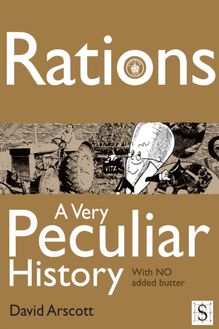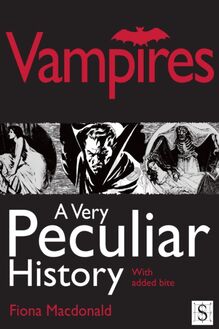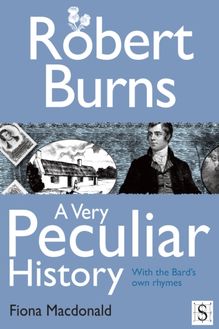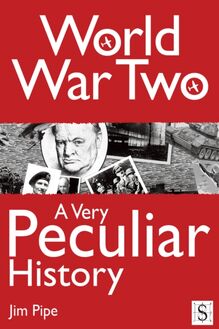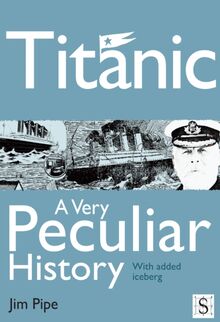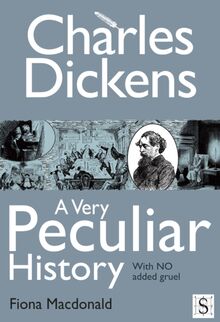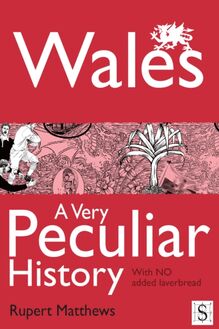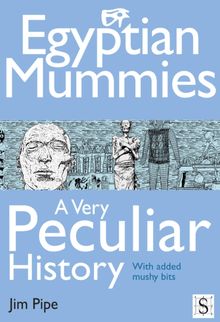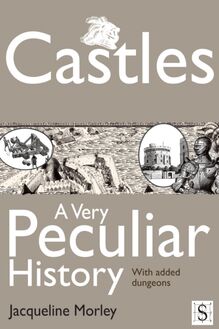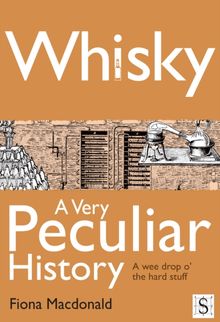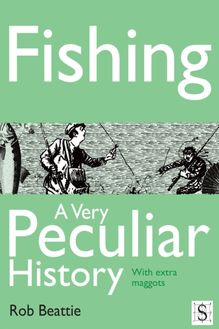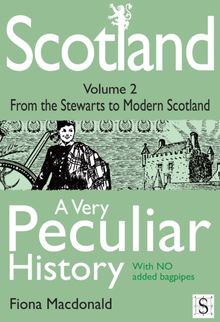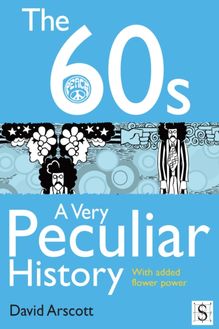Vampires, A Very Peculiar History , livre ebook
64
pages
English
Ebooks
2012
Vous pourrez modifier la taille du texte de cet ouvrage
Obtenez un accès à la bibliothèque pour le consulter en ligne En savoir plus
Découvre YouScribe en t'inscrivant gratuitement
Découvre YouScribe en t'inscrivant gratuitement
64
pages
English
Ebooks
2012
Vous pourrez modifier la taille du texte de cet ouvrage
Obtenez un accès à la bibliothèque pour le consulter en ligne En savoir plus
Publié par
Date de parution
16 février 2012
Nombre de lectures
0
EAN13
9781908759443
Langue
English
Publié par
Date de parution
16 février 2012
Nombre de lectures
0
EAN13
9781908759443
Langue
English
Title Page
VAMPIRES, A VERY PECULIAR HISTORY
With added bite
Written by
Fiona Macdonald
Created and designed by David Salariya
Publisher Information
First published in Great Britain in MMXII by Book House, an imprint of
The Salariya Book Company Ltd
25 Marlborough Place, Brighton BN1 1UB
www.salariya.com
www.book-house.co.uk
Digital edition converted and distributed in 2012 by
Andrews UK Limited
www.andrewsuk.com
Editor: Jamie Pitman
Assistant editor: Jodie Leyman
© The Salariya Book Company Ltd MMXII
All rights reserved. No part of this publication may be reproduced, stored in or introduced into a retrieval system or transmitted in any form, or by any means (electronic, mechanical, photocopying, recording or otherwise) without the written permission of the publisher. Any person who does any unauthorised act in relation to this publication may be liable to criminal prosecution and civil claims for damages.
Every effort has been made to trace copyright holders. The Salariya Book Company apologises for any omissions and would be pleased, in such cases, to add an acknowledgement in future editions.
Visit our website at
www.book-house.co.uk
or go to
www.salariya.com
for free electronic versions of:
You Wouldn’t Want to be an Egyptian Mummy!
You Wouldn’t Want to be a Roman Gladiator!
You Wouldnt Want to Join Shackleton’s Polar Expedition!
You Wouldn’t Want to Sail on a 19th-Century Whaling Ship!
Dedication
To the prize-winning team at Salariya Book Company, without whom...
FMacD
Quotes
‘Throughout the whole vast shadowy world of ghosts and demons there is no figure so terrible, so dreaded and abhorred, yet endowed with such fearful fascination as the vampire; who is himself neither ghost nor demon but who partakes of the dark natures, and possesses the mysterious and terrible qualities of both...’
Montague Summers, The Vampire: His Kith and Kin (1928)
‘The blood is the life!’
Renfield the madman, in Bram Stoker’s Dracula (1897), ch. 11
‘My revenge is just begun! I spread it over centuries, and time is on my side.’
Count Dracula, in Dracula , ch. 23
Introduction
DRACULA: Welcome to my bloodstained world! All through this book, I, Count Dracula, will be with you! Perhaps that’s a threat, or maybe just a promise…
This book is not like most histories. It is not about great leaders, heroes and explorers, or ancient empires, lost civilisations, invasions, migrations and wars. Instead, it looks at the history of an idea. It tells how a completely imaginary creature – the vampire – came to be created.
Vampires do not exist – and they never have done. As living dead bodies, they contradict themselves. They are impossible! Even so, vampires have had extraordinary power over real living people, as well as over their film, TV and storybook victims. Vampire stories are thrilling – and fun. But they are not just entertainment. In the past, belief in vampires led to many deaths – of real men and women. Even today, a few people have tried to claim that ‘being a vampire’ allows them to kill or torture. Belief in vampires has been – and still can be – seriously bloody.
The first vampires
Today’s vampire beliefs have developed over many thousands of years. They are a strange mixture of solemn religion and crazy superstitions, traditional folklore and the latest media fashions.
We do not know how old these beliefs are, but they appear in the earliest myths and legends from many parts of the world. And, very often, the spirit or life force in a body was symbolised by its blood. If that blood were taken away, the person it came from would die. But – so people thought – the blood might have the power to renew life in the person who had taken it!
DRACULA: Here’s a description, written over 100 years ago, of a classic vampire...
‘It is perfectly white – perfectly bloodless. The eyes look like polished tin; the lips are drawn back, and the principal feature next to those dreadful eyes is the teeth – the fearful-looking teeth – projecting like those of some wild animal, hideously, glaringly white, and fang-like. It approaches the bed with a strange, gliding movement. It clashes together the long nails that literally appear to hang from the finger ends...
He drags her head to the bed’s edge. He forces it back by the long hair still entwined in his grasp. With a plunge he seizes her neck in his fang-like teeth – a gush of blood, and a hideous sucking noise follows. The girl has swooned, and the vampyre is at his hideous repast [meal]!’
from Varney the Vampire (1847) James Malcolm Rymer
DRACULA: Powerful stuff! But where did this image of a bloodthirsty vampire come from? Vampires are not like cats or dogs – we don’t see them around us. So how do we know what they look like, or how they behave? How and why were vampires invented? Read on, and find out more!
Eternal life
Death comes to us all, but, over the centuries, countless billions of people have wished that they, or their loved ones, might live for ever. They have often tried to preserve their honoured dead – for example, in ancient Egypt, by turning them into mummies, or, in early China, by burying them in suits of precious jade. They have left food and drink beside burials, hoping to nourish buried bodies, and regularly visited tombs, to talk to dead ancestors.
Some living people have also tried to think how the spirits of the dead might feel. In doing so, they have dreamed up imaginary beings, such as ghosts, dybbuks (in Jewish tradition, a dybbuk is the soul of a dead person which possesses a living person – often because it has unfinished business in the world of the living) – and vampires. All these creatures have been unable to rest in their graves – and have longed for a new life after death. Some have also sought revenge for untimely or unlawful killings.
Many of these imagined ‘living dead’ have been timid, frail and invisible. But not vampires! They are violent and aggressive (even if this is disguised under a surface layer of charm), and have larger-than-life revolting, undecayed, bodies: twisted, blood-red (or deathly pale), bloated and grimacing.
Like ghosts, vampires haunt places where they once lived, appearing mysteriously, then vanishing. But, unlike ghosts, vampires are always hungry! In their eagerness to get food, they bite, suck, strangle and suffocate. They need meat or excrement (ugh!) or sex or (mostly) blood to survive. Once satisfied, they sleep in their graves – but only until their appetite comes back again…
Vampire veg
Some past peoples have believed that the life-force of other living things besides humans might be dangerous. Some eastern Europeans were terrified by vampire fruits and vegetables. If stored in warm, damp conditions, pumpkins and watermelons can ooze a sticky red liquid – which superstitious farming families claimed was blood. They feared that, when hungry, the melon or pumpkin might try to attack them. And, if vampire vegetables don’t get you, here’s a scary reminder. Just a glance from a vrykolakas – a traditional Greek country vampire – can kill!
DRACULA: It’s time to look at blood, and why it’s so nourishing. Come with me to Chapter 1!
CHAPTER ONE: Life force: A very bloody business
We all need blood to live. That has been known since ancient times. Many people in the past also believed that blood shaped a person’s character – for good or bad. In the first century AD, Roman writer Pliny the Elder reported that spectators rushed to drink the blood of dying gladiators, hoping that it would make them brave and strong. Later, around 1300, Petrus de Abano, professor of medicine at Padua University, warned that drinking lepers’ blood would make you mad.
An average human body contains about 5 litres of blood. (Big men have a bit more, small women a little less.) Without blood, we would die. But what, precisely, is it? Where does it come from? And how does it keep us alive?
Floating cells
Blood is a mixture of microscopic living cells floating in a clear, yellowish liquid called plasma .
•Red blood cells (erythrocytes) carry oxygen (a gas essential for human tissues to function) around the body. The oxygen is carried by a protein in red cells called haemoglobin , which gives blood its deep red colour.
•White blood cells (leukocytes) fight infections and destroy old or damaged cells before they can harm the body.
•Platelets (thrombocytes) help the blood to clot and cover cuts and grazes. This prevents dangerous bacteria getting into the body. If blood did not clot, we might bleed to death from a tiny scratch.
•Plasma is about 90 per cent water, but also contains hormones (chemical messengers produced by glands), glucose (made by the liver, from food, to supply muscles with energy), carbon dioxide (a waste gas) and minute traces of many other substances. All of these are essential to keep the body working properly.
Blood substitute
According to legend, Medea, a queen – and witch! – in ancient Greece, used a magic mixture to make a sick old man young and strong again.
First, she mixed the following ingredients in a big bronze cauldron:
•Plant roots
•Herb juices
•Rare pebbles
•Sparkling frost (collected at full moon, of course!)
•The wings of an owl
•The guts of a werewolf
•The flesh of a snake
•The liver of a stag
•And the head of a 900-year-old crow!
Then Medea cut the old man’s throat and let all the
